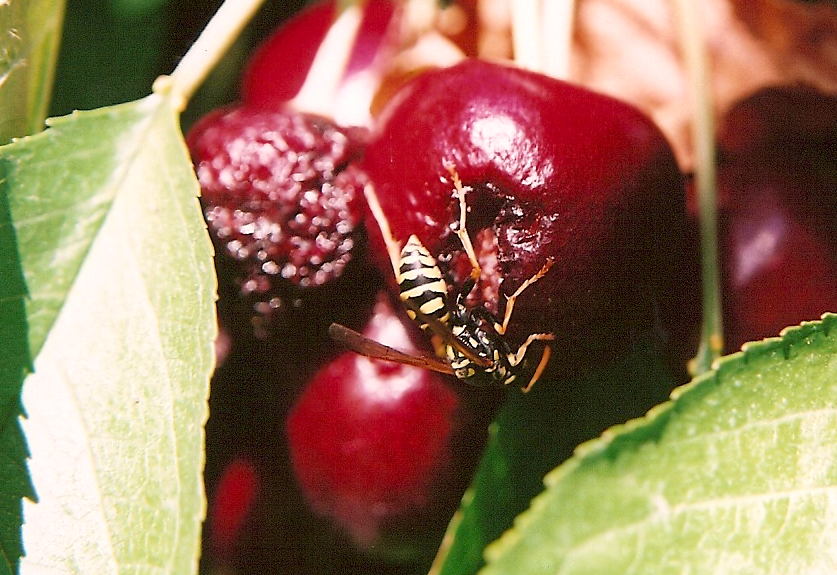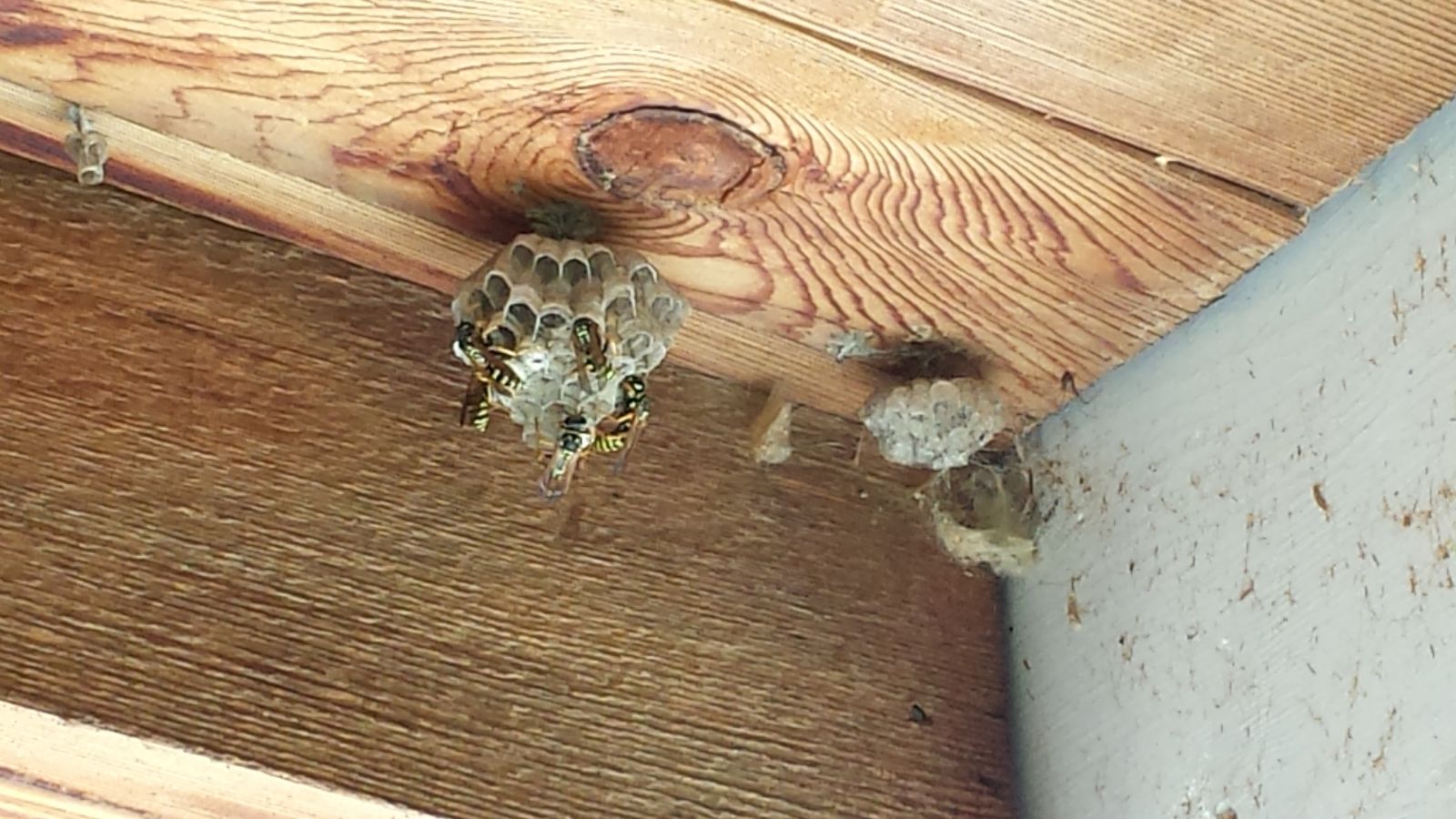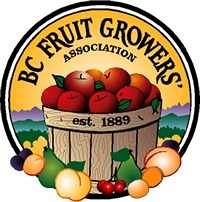European Paper Wasp
General Description
The European paper wasp is a recent introduction to the Southern Interior (2005 first identified). For most of the summer it preys on other insects, but as host tree fruit crops ripen, workers attack and damage the fruit. It has become the most common species of wasp in many areas.
Hosts
Cherries, apples and grapes.
Damage
Worker wasps chew away the skin of the fruit to collect the ripened tissue beneath; creating channels across the surface of the fruit and rendering the fruit unmarketable (Fig. 1). The damage allows for infection by and spread of bacteria, yeast and fungi. The wasps are also a nuisance and, in some cases, a serious threat to pickers and other orchard workers.
.jpg) |
| Figure 1. Cherries damaged by European paper wasps (BCMA). |
Identification
European paper wasps resemble the common yellow and black yellowjacket wasps but have have more slender, longer bodies and longer legs which dangle down when in flight (Fig. 2). They build characteristic single-tiered open-comb paper nests suspended in sheltered locations (building eaves, hollow trees, bin piles, rock piles, etc.) preferably facing south or exposed to reflected heat. They are less aggressive than paper wasps but will defend their nests if threatened.
 |
| Figure 2. Adult European paper wasp attacking cherries. (D. Holder) |
Life History
Fertilized queens overwinter in sheltered locations (buildings, hollow trees, rock piles, etc.) from which they emerge in the spring to seek out suitable sites to construct their nests (Fig. 3). Initially she makes a few cells into each of which she lays an egg.
 |
| Figure 3. European paper wasp workers tending nest. (H. Philip) |
The queen captures insects to feed the developing larvae which transform into worker females in about 40 days under favourable conditions. Worker females are responsible for food collection, nest construction and repair, and defense of the nest. In the autumn several queens are produced in each colony and soon leave to find suitable overwintering sites.
Monitoring
Use yellowjacket traps baited with beer to monitor for overwintering queens in the spring (See Cultural Control). Queens are always the first wasps seen in the spring and are larger than workers.
Management
Cultural Control
Because European paper wasps have several options for nesting sites within and outside orchards, orchardists should consider an area-wide approach to minimizing development of colonies (nest-building). This involves neighbouring orchardists working together to protect their susceptible crops. One tactic is to trap out as many queens as possible before they begin nest building and laying eggs in the spring.
In orchards where there is a history of wasp damage, place commercially-available wasp traps baited with an attractant (special lure, beer or sugery solution) near outbuildings and every 20 to 30 meters around the perimeter of the orchard just prior to the green tip stage of cherry bud development in order to capture emerging overwintered queens. Fruit injury due to wasps has been most common in orchards adjacent to wilderness areas and abandoned properties.
During the post bloom to harvest period, inspect potential sites (see Life History) within and near the orchard for wasp nests and destroy any found. Trapping worker wasps during this period has been relatively ineffective in preventing crop damage.
Chemical Control
There are no chemicals registered for control of this pest in orchards. The wasps are not resident in orchards but move in during harvest. Domestic aerosol sprays are an option to kill wasps congregated on their nests. Sprayed nests should be knocked down and crushed to prevent any larvae or pupae in the cells from completing development.
